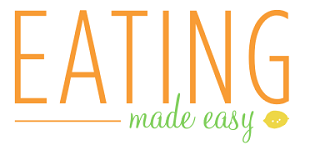Summertime markets are now in full swing. There’s no better place to find fresh, flavorful produce, but it can be a pretty overwhelming place if you’re new to farmer’s market shopping. With so much produce from so many vendors, it’s hard to know what & how much to buy and what to do with all this stuff when you get home. Below is a basic guide to navigating your local market. Once you get comfortable with this type of shopping and familiar with what’s there, you can start venturing into some of the more unique items that markets have to offer.
- Stick with what you know. If you’re new to the market or to cooking, skip the exotic fruits & veggies and go for produce you’re familiar with. You’ll be much less overwhelmed if you focus on carrots and tomatoes rather than kholrabi & ramps (yes, those are real vegetables).
- Limit the number of items you buy. It’s easy to go nuts when you see all this beautiful produce, but overbuying will lead to wasted food, wasted time thinking about what to do with the food, and of course wasted money. Instead, stick to 2-3 veggies and 2-3 fruits per week, plus one kind of fresh herb and one kind of citrus fruit to use for dressings and sauces.
- Do some meal planning before you go. This isn’t always possible, but when you remember or have time, plan a couple of meals before you shop, so you can buy the specific produce you need to make those meals. I usually buy a few veggies I can use for salads and hot meals, plus a few veggies and fruits for snacking.
- Prep produce when you get home. If you can’t do it right when you get home, plan a time within a day or so when you can wash and chop lettuce (here’s how I do it), wash and cut veggies for snacking, and wash some fruit (most fruits are better prepped right before eating, but you can always wash cherries & grapes, wash and slice strawberries, melons, & oranges). Having a fridge full of ready-to-go veggies and fruits makes it much more likely that you’ll reach for these healthy items when you’re hungry for a snack or ready to make a meal.
- Keep it simple. No need to reach into the depths of your recipe collection or biggest cookbook to figure out what to make for dinner. During summer especially, produce is so good that it’s best eaten in it’s simplest form. Salads can simply be a platter of tomato chunks drizzled with olive oil or a bowl of sliced cucumbers with salt, lime juice, and hot sauce. Snacks can be melon wedges, snap peas with hummus, or berries topped with yogurt. For a main dish, toss pasta with fresh basil and cherry tomatoes (like in this recipe), or lightly saute greens to serve with fried eggs (like this). The great thing about summer is that good food is plentiful, and the time and effort needed to make something tasty is minimal.







4 Comments
Tyler
July 7, 2011 at 10:39 amThis is great. The farmer’s market can be a stressful place for those of us who don’t cook much. I feel more motivated to go now.
Angie
July 7, 2011 at 10:40 amThank you so much!! I have avoided the farmer’s market even though I KNOW that’s where the good stuff is because it just overwhelms me!
Amelia
July 8, 2011 at 8:43 amSo glad you find these tips helpful!
Kaitlyn
July 10, 2011 at 10:17 pmMeal planning is a great idea! I tried it when I had a guest in town and it really helped me avoid food wasting (one of my faults). My goal is to start prepping produce when I get home-such a good tip!! Thanks!